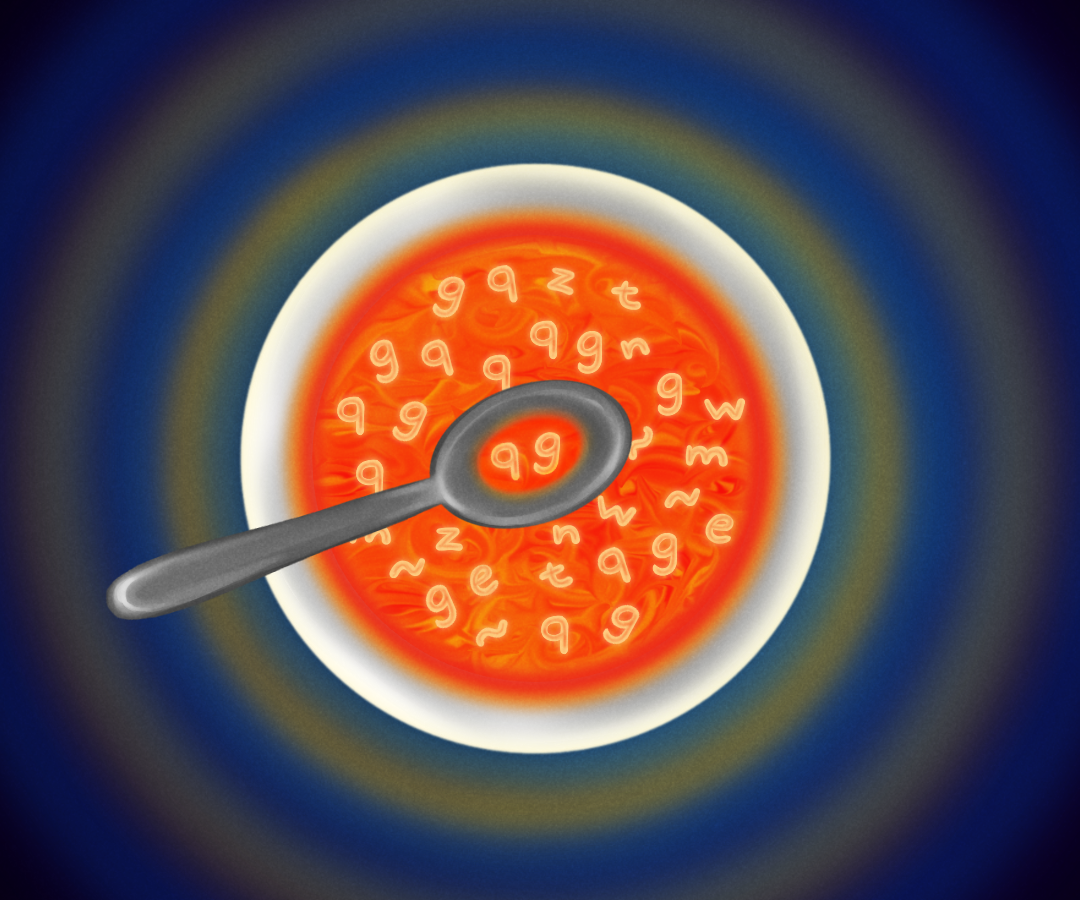|
By Ethan Feng What happens to matter when it gets extremely hot? And how can this tell us more about the birth of the universe? Let’s start with the basics. Chemistry 101 teaches us that temperature is a measure of how quickly microscopic particles are moving. At relatively low temperatures, matter exists in the solid state because molecules do not move much, due to the electrostatic intermolecular forces that bind them together strongly. As the temperature rises more and more, the molecules move faster, and these intermolecular forces struggle to hold molecules tightly in place. This allows them to move with more freedom—giving rise first to the liquid state, where intermolecular forces still hold some influence, and then to the gaseous state, where the forces have been overwhelmed essentially completely. These comprise what we typically learn as the three “standard” states of matter—but this is only the tip of the temperature-iceberg. When matter gets much hotter (which it can), not only are the intermolecular forces overwhelmed, but so are the Coulombic forces that tether electrons to their nuclei as the attraction between positive and negative charges is no longer enough to resist the subatomic particles’ increased energy. This causes electrons to be ejected from atoms, giving rise to a cloud of unbound electrons that surround the remaining positively charged ions. We call this plasma, often referred to as the fourth state of matter, and it is what lightning bolts and neon light signs are made of. Perhaps you’re noticing a theme here: as temperatures rise, forces that are normally strong enough to bind particles together get overwhelmed, causing structures of particles to break apart, thereby allowing free particles to move around with ever-increasing disorder. Indeed, this trend continues if we crank up the temperature even further. Heat matter up enough, and eventually, even the forces that hold the protons and neutrons within the nucleus concede, giving rise to a chaotic sea of free subatomic particles. But even that is not the end… Before we continue, we must give a brief review of particle physics. Each particle within an atomic nucleus (i.e., a proton or a neutron) is further composed of three smaller subatomic particles, called quarks. To the best of science’s current understanding, quarks are the most fundamental, indivisible building blocks of matter in the universe. These quarks are held together extremely tightly by force-carrying particles called gluons—so strongly that, under ordinary circumstances, it is virtually impossible to pull the quarks apart. But at extraordinary temperatures on the order of five trillion degrees Celsius, even the strong force that binds quarks together must yield: under such extreme conditions, the quarks and gluons within individual protons and neutrons are ripped apart. This gives rise to a chaotic mélange of freely flowing, unbound quarks and gluons—appropriately named quark-gluon soup. In it, no molecules, no atoms, and no protons or neutrons can exist—only a structureless sea of the individual elementary particles that usually comprise them, unable to combine to form anything greater because the enormous temperatures overwhelm any attempt at bonding. Such an outrageous state of matter rarely arises in the universe because the conditions required to create it are so extreme—but that doesn’t mean scientists haven’t found a way to make it. Making quark-gluon soup requires the aid of a particle accelerator, such as the famous Large Hadron Collider in Switzerland. Thanks to ingenious engineering, the apparatus can accelerate particles close to the speed of light; once they are fast enough, the collider smashes two high-speed particles into one another. The massive kinetic energy of the particles generates enormous temperatures during the collision and causes the particles to literally melt into a quark-gluon soup. One intriguing fact is that, while performing such experiments, the temperatures generated are measured to be comparable to the temperature of the universe during the Big Bang! Hence, physicists hypothesize that in the fraction of time immediately after the Big Bang, before ordinary matter came to be, the entire universe was a quark-gluon soup. Then, as the universe rapidly expanded and cooled off, in the blink of an eye, the quarks agglomerated to form matter as we know it. Retracing the story of the nascent universe is perhaps one of the most prominent unfinished tasks in physics. For example, scientists do not yet know how the first quarks and gluons assembled into the protons and neutrons we know. Without an understanding of this mechanism, it remains difficult to construct a complete picture of the universe’s development immediately after the big bang. So, scientists are currently using particle accelerators to study the free quarks and gluons in quark-gluon soup, trying to characterize their transition into larger particles. Progress, however, is difficult—even with the incredible available technology, particle accelerators are still only able to generate minuscule droplets of quark-gluon soup that only exist for a tiny fraction of a second before cooling off into larger particles. Some accelerators are currently undergoing upgrades that will allow them to generate bigger, longer-lived droplets of quark-gluon soup for better observation. Given these challenges, physicists remain hard at work, hoping to answer long-standing questions about how our universe began. Many thanks to Professor Helen Caines at Yale, whose lecture during the YYGS program in 2018 inspired this article.
0 Comments
Leave a Reply. |
Categories
All
Archives
April 2024
|

